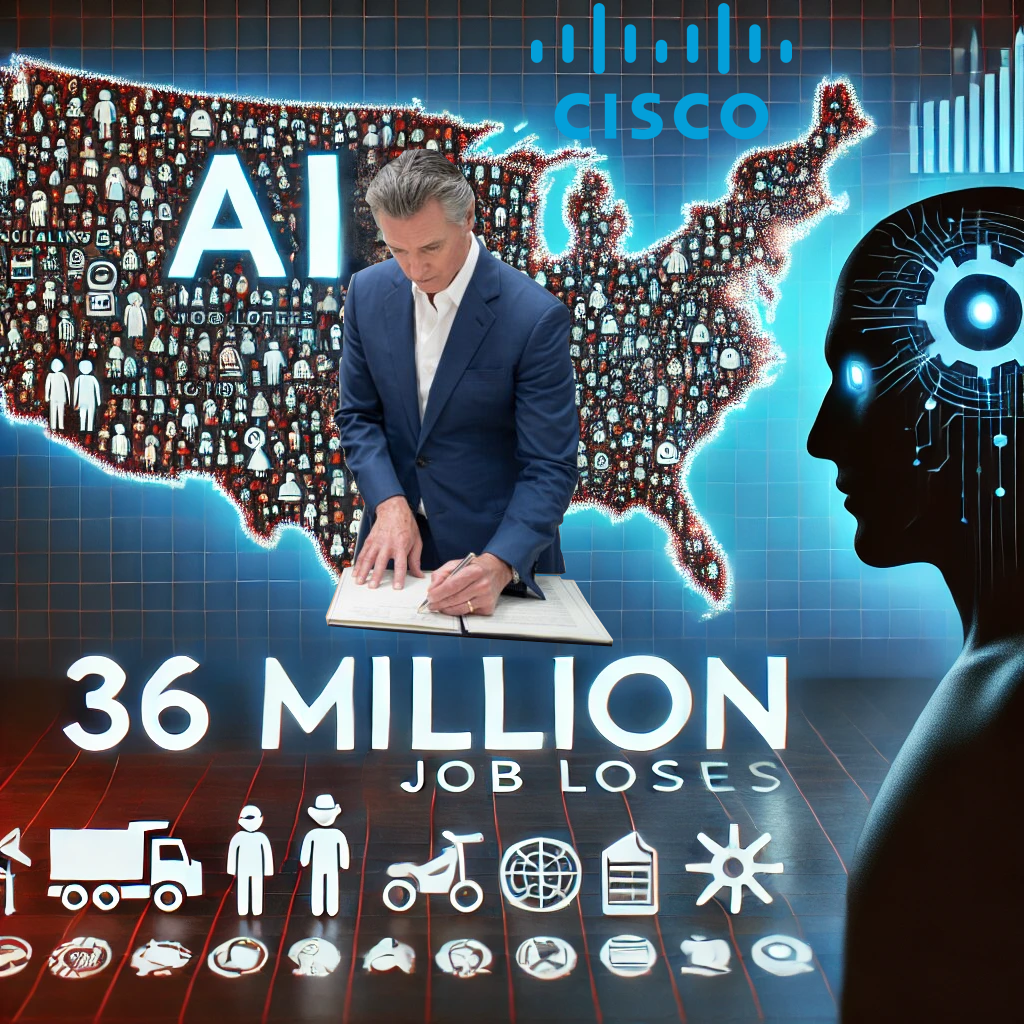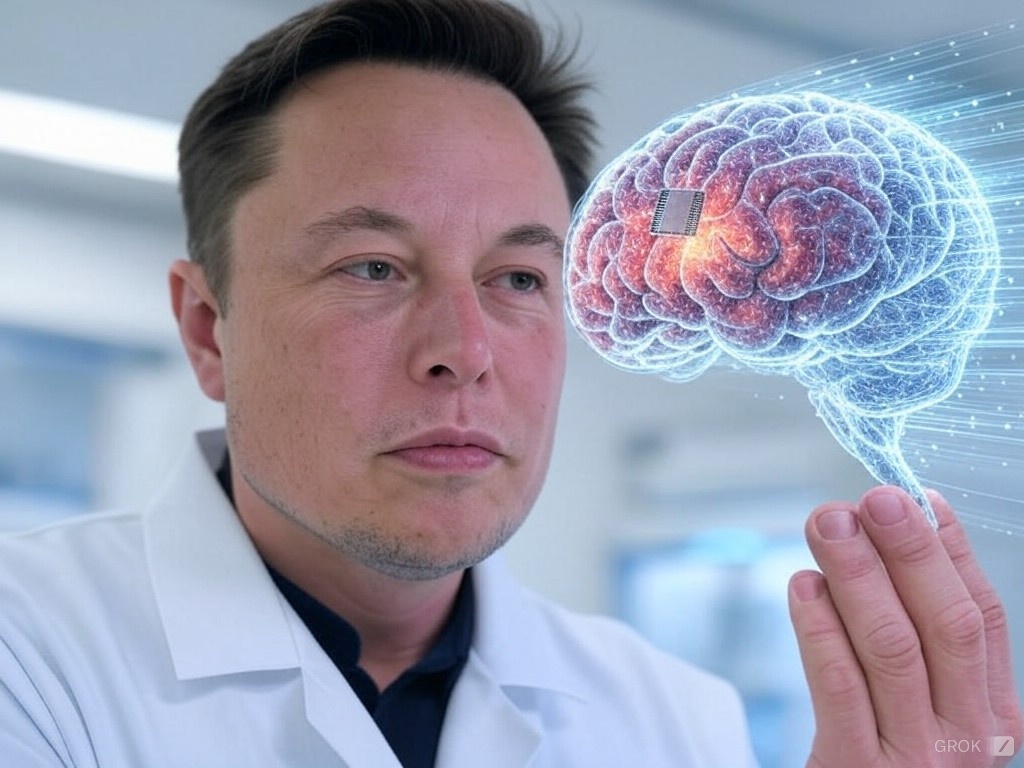The rapid adoption of artificial intelligence (AI) is driving profound changes across industries, with significant implications for the workforce. In a stark example of this shift, Cisco Systems Inc., the world’s largest networking company, is reportedly preparing to lay off around 4,000 employees in its second round of job cuts in 2024. This follows a similar round in February, which saw 4,250 employees lose their jobs. Cisco’s decision to reduce its workforce underscores the company’s strategic pivot towards AI technologies, as it aims to drive $1 billion worth of AI product orders by 2025.
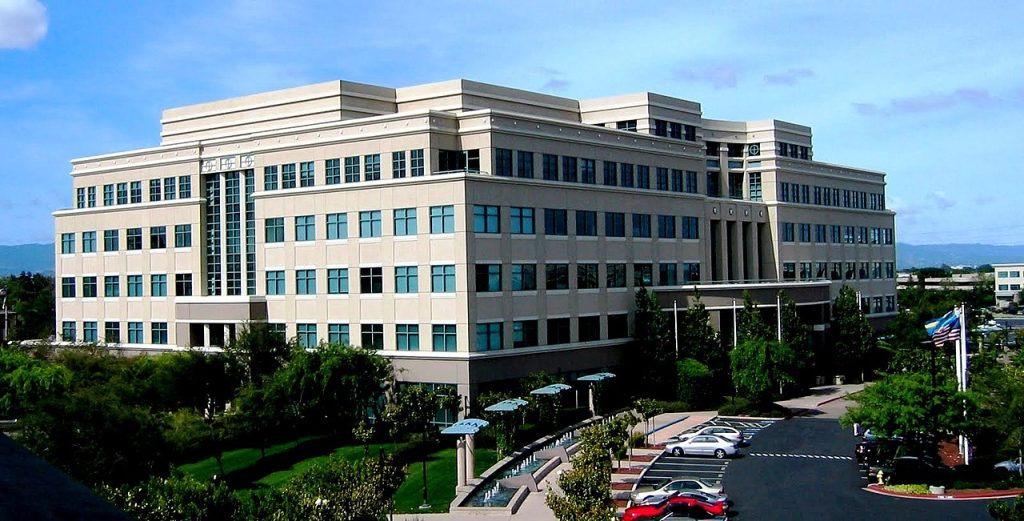
These layoffs at Cisco are part of a broader trend where companies are increasingly integrating AI into their business models, often at the expense of jobs. The implications of this shift are not limited to the tech industry. In California, Governor Gavin Newsom is proactively addressing the challenges and opportunities presented by AI through a series of initiatives designed to harness the technology for public benefit.

Building on an executive order that calls for the state to utilize AI to best serve Californians, Governor Newsom’s administration has unveiled several programs aimed at preparing the workforce for the AI-driven economy. These initiatives include a state worker training program, a GenAI summit, the issuance of a GenAI toolkit for state procurement, and the launch of pilot projects exploring how GenAI could address challenges such as traffic congestion and language accessibility.
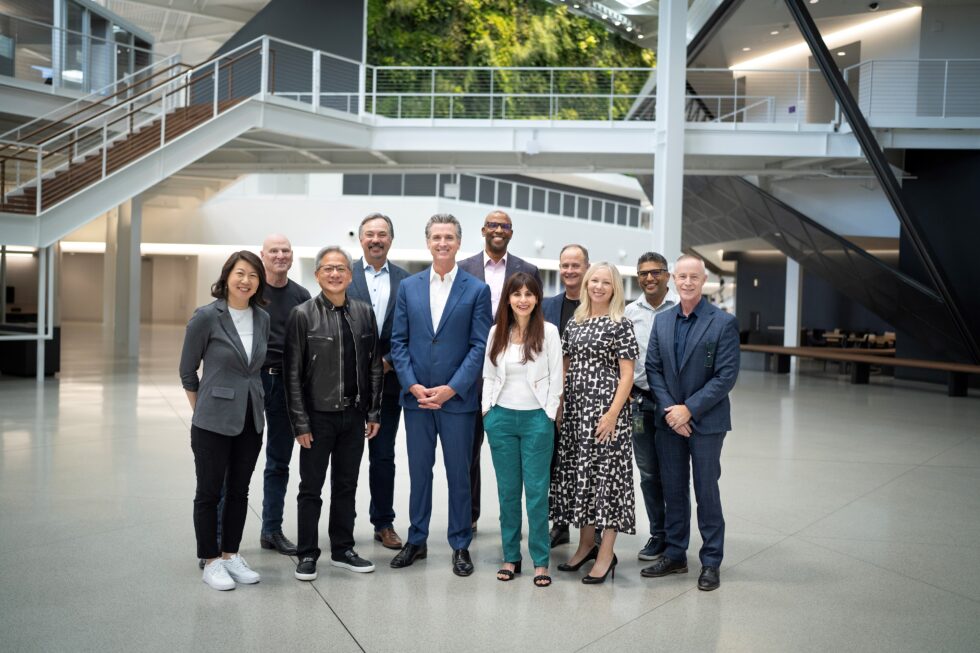
In a partnership with NVIDIA, a global leader in AI hardware and software, California is taking further steps to prepare its workforce. Together, they aim to train 100,000 students, college faculty, developers, and data scientists, equipping them with the skills needed to thrive in an AI-driven world. This initiative is not only about safeguarding jobs but also about unlocking new economic opportunities and ensuring that California remains at the forefront of technological innovation.
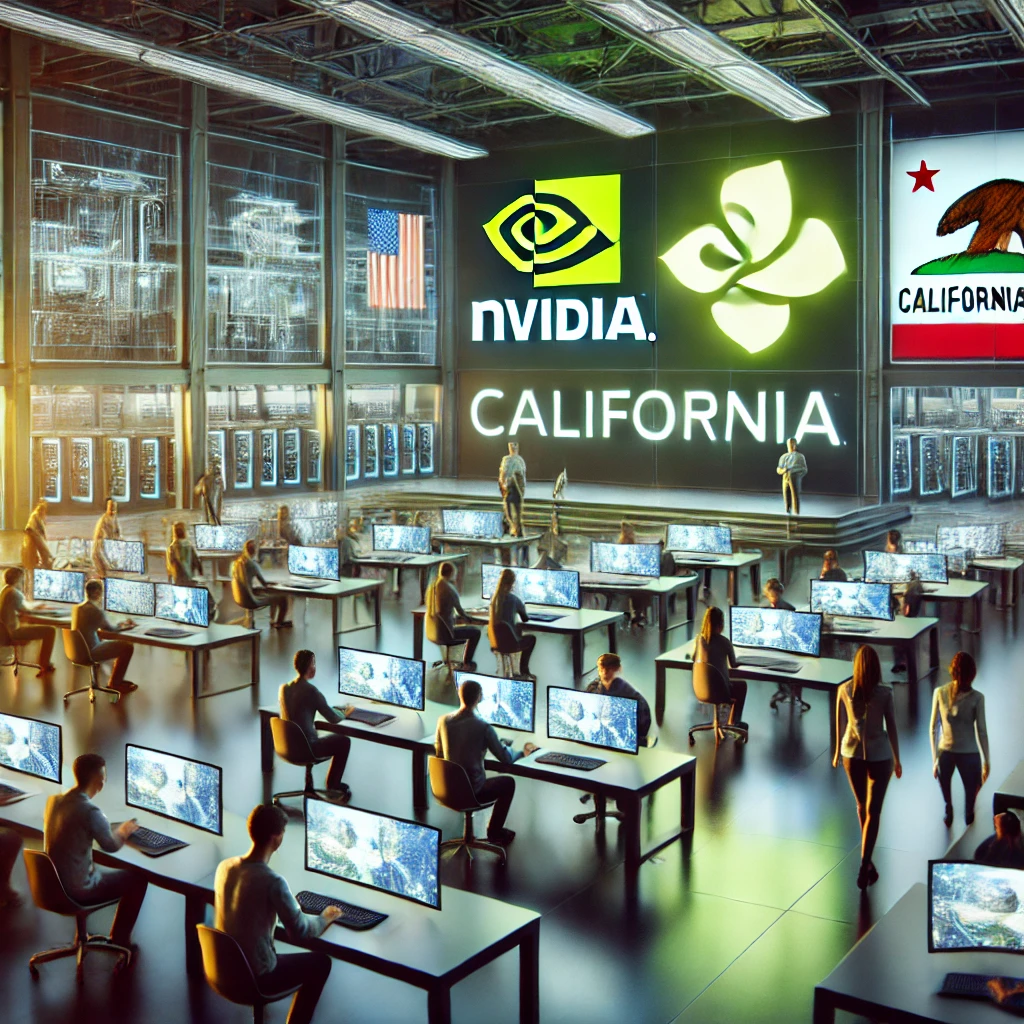
The broader implications of AI-driven job losses are significant. According to various estimates, AI could displace millions of jobs over the next decade. The World Economic Forum’s Future of Jobs Report 2020 predicted that by 2025, AI and automation could eliminate 85 million jobs globally while simultaneously creating 97 million new ones. However, the transition could be disruptive, particularly in industries heavily reliant on routine tasks that AI can easily automate.
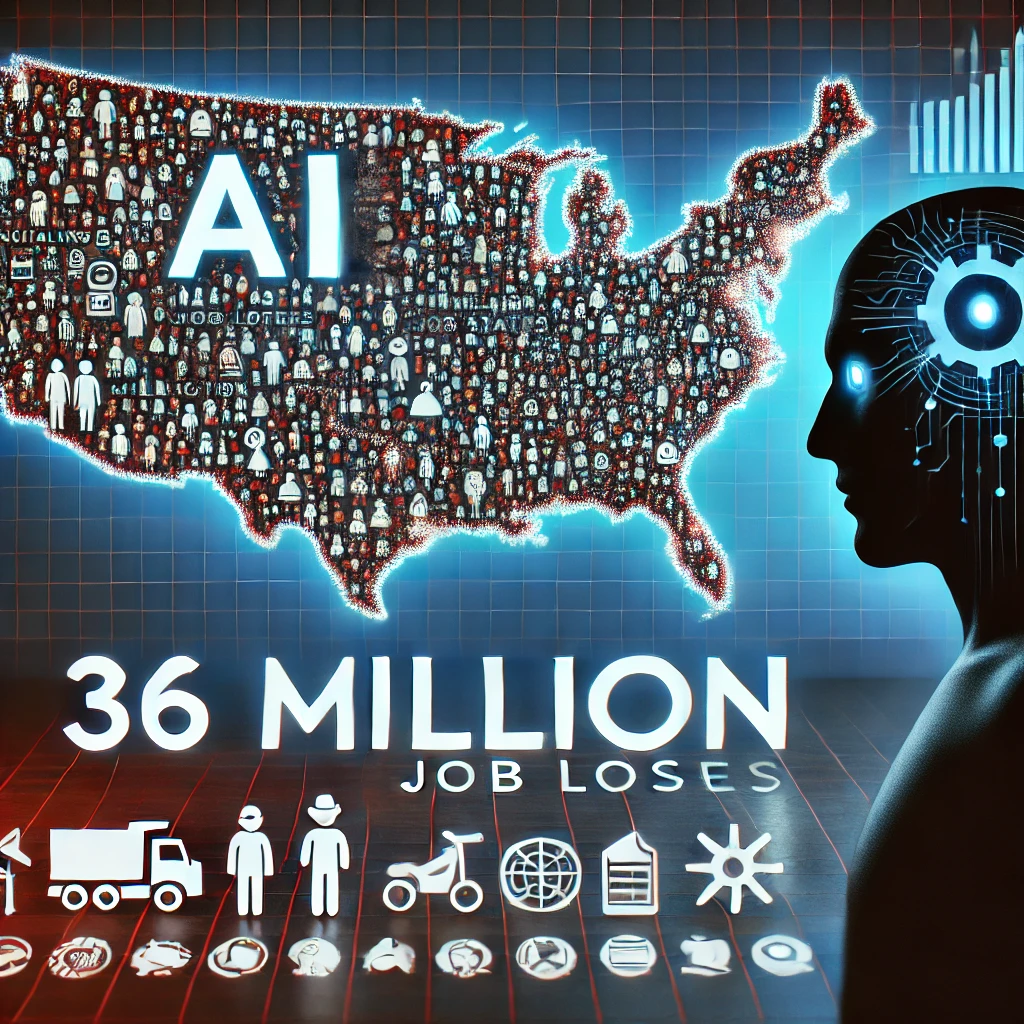
In the United States, sectors like manufacturing, retail, and customer service are expected to feel the impact most acutely. A study by the Brookings Institution estimated that approximately 25% of U.S. jobs are at high risk of being automated, translating to roughly 36 million jobs that could be affected. Workers in these sectors may face significant challenges if they do not acquire new skills aligned with the demands of an AI-driven economy.
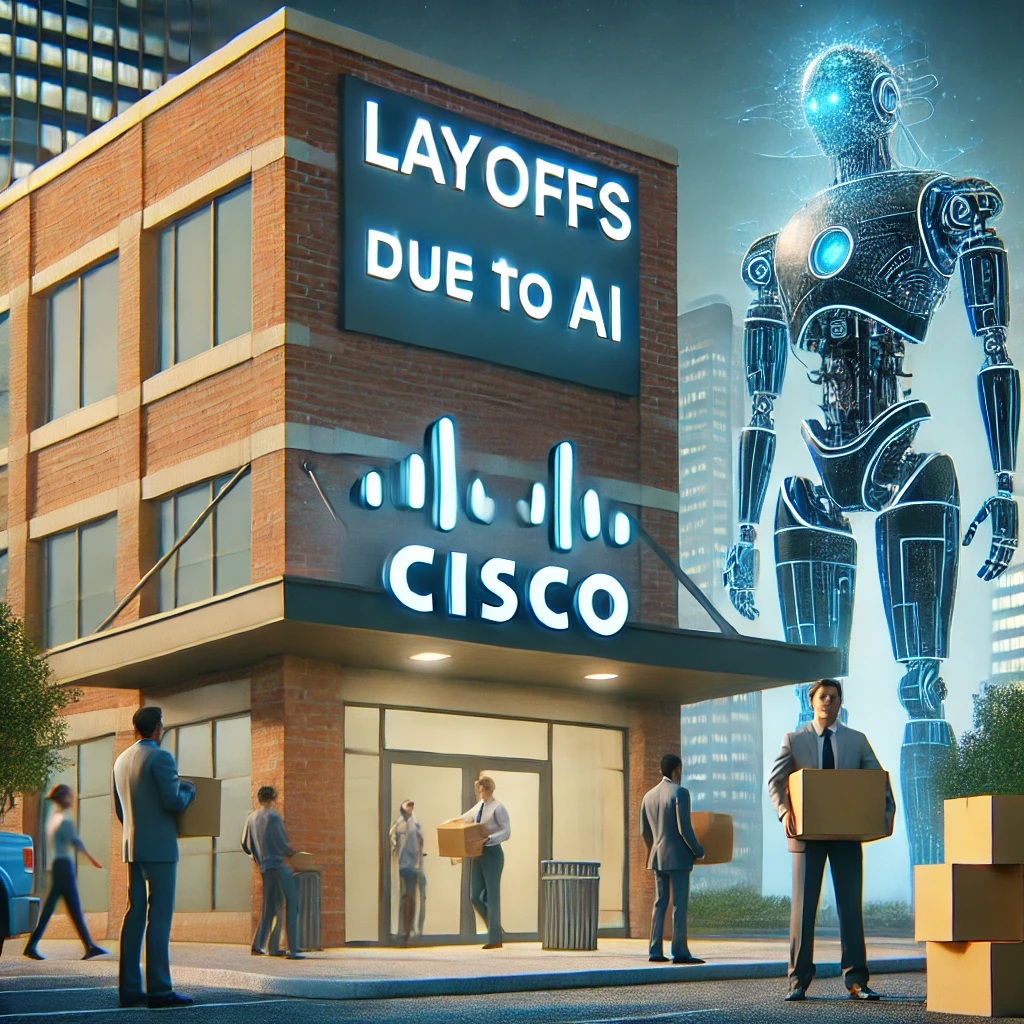
While the net effect of AI on job creation versus destruction remains a subject of debate, the immediate concern for many workers is the potential for job loss. Cisco’s layoffs highlight how even highly skilled tech workers are vulnerable to the disruptions caused by AI. As more companies follow Cisco’s lead, the economic impact of such layoffs could be substantial, affecting not only those directly impacted but also local economies and industries dependent on consumer spending.
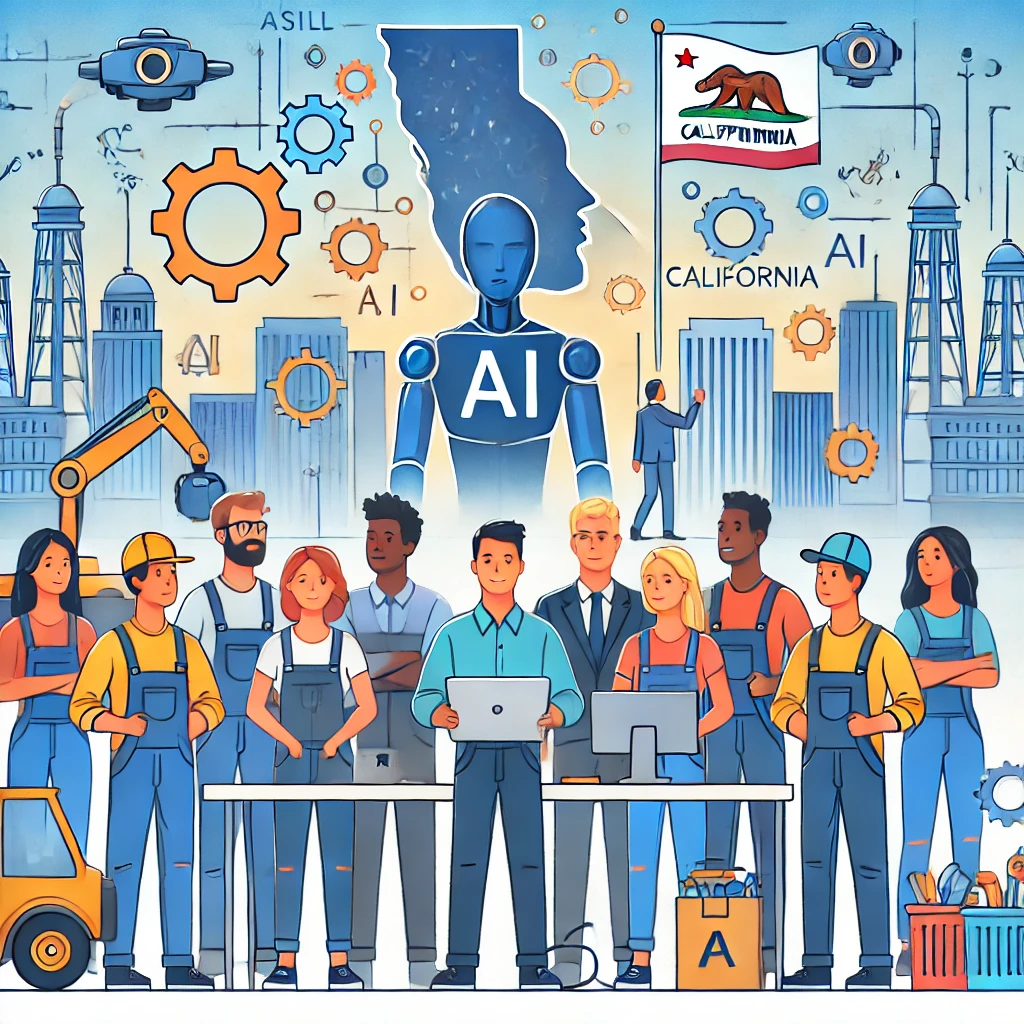
In response, there is a growing emphasis on workforce retraining and upskilling. Governments, educational institutions, and businesses are being called upon to develop programs that can help displaced workers transition into new roles within the AI economy. However, the success of these initiatives will depend on their ability to keep pace with the rapid advancements in AI technology.
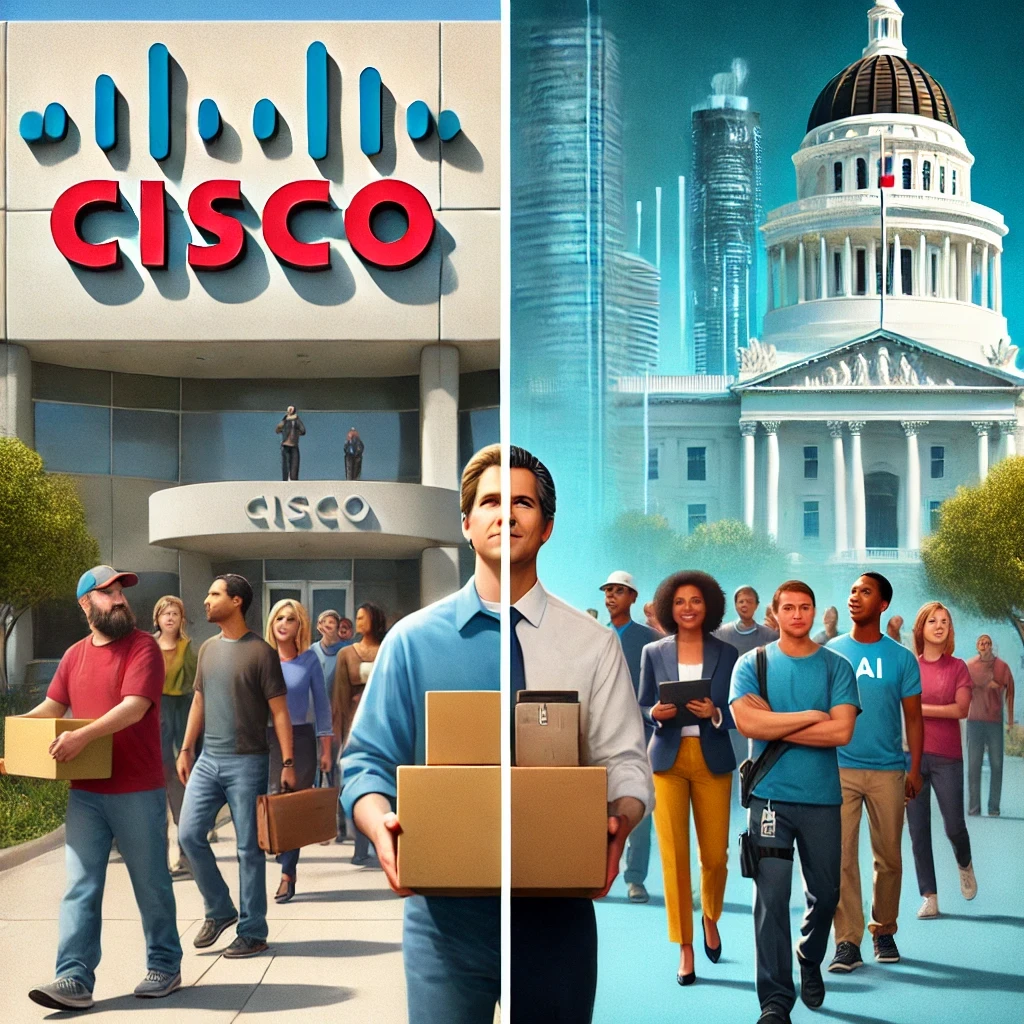
Cisco’s recent layoffs and California’s proactive AI initiatives reflect the dual nature of AI’s impact on the labor market—both as a driver of economic growth and as a source of significant disruption. As AI continues to evolve, it will be crucial for policymakers, business leaders, and society as a whole to balance the benefits of technological progress with the need to protect and support the workforce. The next decade will likely be a critical period of adjustment, as the world grapples with the profound changes brought about by AI.

